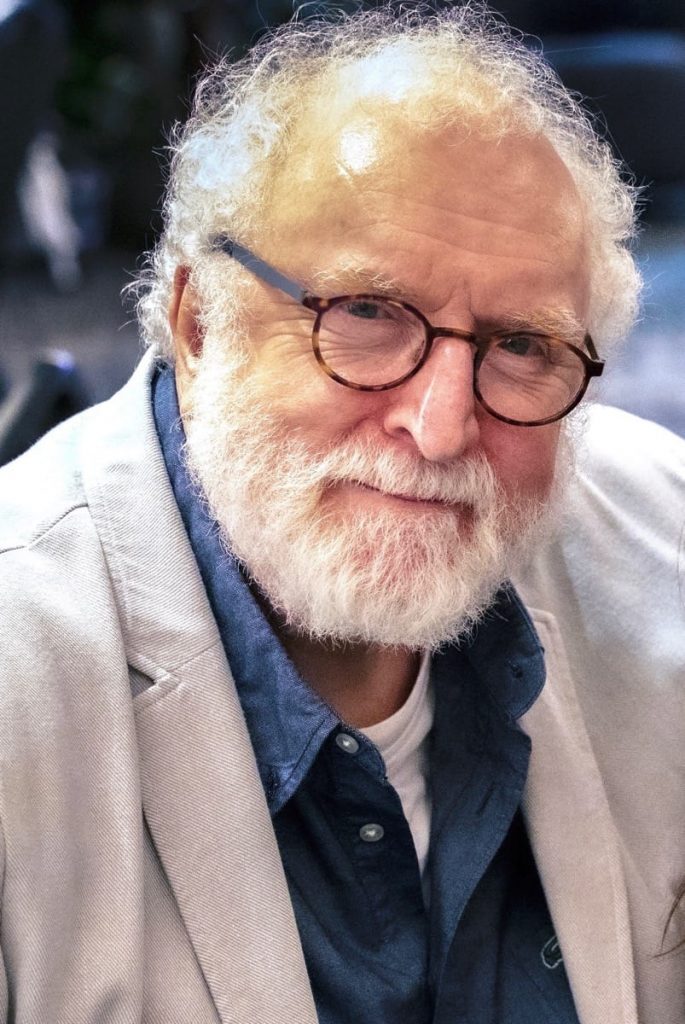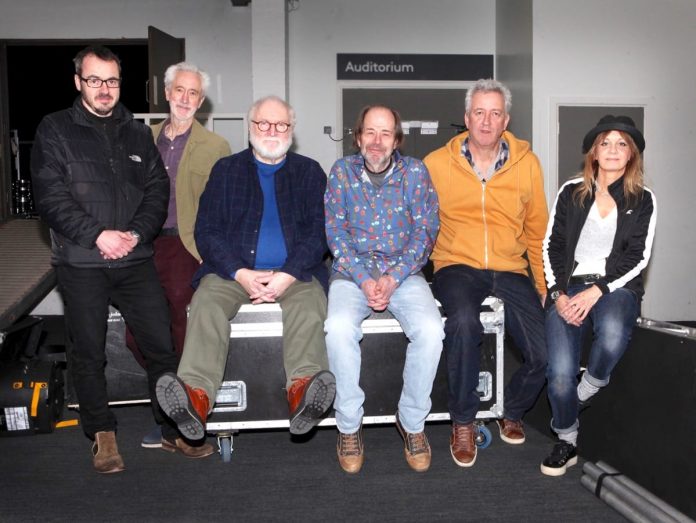In Concert by Mo Foster & Friends, who include guitarist Ray Russell and saxophonist Chris Biscoe, is not only a musical triumph but a triumph for Foster’s persistence. “It was a long fight to find someone to release it, at my age,” declares the 76-year-old bass guitarist. “A lot of people said no and that CDs were dead but I fought my way through and found someone [Right Track Records]. And musically I’m thrilled.”
Gil Evans to rehearsing brass section: ‘This is the note I’ve written. But if you don’t like it, play another one’
The album includes several tracks associated with Gil Evans, including his composition The Pan Piper, which was first recorded by Miles Davis on Sketches Of Spain in 1960 and Heyward-Gershwin-Gershwin’s Gone Gone Gone which Evans arranged for Davis’s Porgy And Bess in 1959.
“I’ve loved his music since I heard Sketches Of Spain and Porgy And Bess,” says Foster. “At university I was fascinated by Gone Gone Gone which has wonderful descending chords at the end. I made a 15-foot tape loop of them which went right round the room so I could keep hearing them over and over!”
Foster actually toured Europe in 1983 with the Gil Evans British Orchestra. “I loved him,” he says of Evans as a bandleader. “He was very quiet and very free. When we were rehearsing, there was a big chord at one point and Gil very quietly said to the brass players ‘This is the note I’ve written. But if you don’t like it, play another one!’ That cracked me up.”
As bandleader on In Concert, Foster resisted the temptation to solo on every track. “When I’m surrounded by the best soloists in town I’ve no desire whatsoever to do a bass solo!” he chuckles. “I’m content with the role bass has which is like a route map showing people where they are in the piece. And I’ve discovered over the years that the choice of notes influences the chord above it. It actually changes the emotion. So what I like doing is a mixture of helping people know where they are and altering the emotion of the piece.”
In Concert includes So Far Away which Foster originally recorded on his debut solo album Bel Assis (1988) and which became part of rock guitarist Gary Moore’s repertoire. Moore sadly died a rock-star death in 2011 aged 58 but Foster enthuses about his musicianship. “He’s wonderful, an amazing player. There are YouTube clips of us playing a charity gig. I brought him on and said ‘Would you please welcome one of the finest guitarists in his price bracket!’ And he’s stunning. So emotional.”
So Far Away was co-written by Foster with Ray Russell, one of his greatest musical allies. “I met him in 1973. He was one of the few jazz players who had a rock sensibility. He had that Hendrix sound and so we got on and we’ve been in lots of bands together and we’re good mates.”
‘Jack Bruce had been around and Paul McCartney but then came Jaco Pastorius and Stanley Clarke. Being a studio player I had to learn what they were doing and replicate them so I was always absorbing ideas’
Foster began his full-time career with jazz rockers Affinity whose sole, self-titled, album was released in 1970. Thereafter he began playing sessions sometimes for out-and-out commercial acts like Dollar, Dana and Su Pollard. “There used to be a joke that went round sessions: ‘Lie back and think of the invoice!’” he laughs. “It paid the rent, that’s all I can say.”
His chops continued to develop, however. “Jazz and rock didn’t join up until Miles Davis began incorporating Fender bass and Fender piano and suddenly with bands like Chicago and Colosseum you saw you could have rock intensity with jazz harmony. There weren’t many [bass] players before: Jack Bruce had been around and Paul McCartney but then came Jaco Pastorius and Stanley Clarke. Being a studio player I had to learn what they were doing and replicate them so I was always absorbing ideas.”

When he began playing sessions Foster couldn’t read music. “I was getting by, bluffing a lot. But it got very heavy with things like film sessions where every note was written and you couldn’t fudge that because sometimes you’re playing in unison with a horn. And one day I’d a session with a 50-piece orchestra and nine-piece rhythm section. I was listening like mad and fitting in and thought I was getting away with it. But the MD David Rose suddenly cut the orchestra and pointed to me and said ‘Mr Bass Player, would you please play bars 76-94.’ It was the awful moment when the whole orchestra stops and looks and you want to die. And I played something, at which point he said ‘It’s not what I’ve written but it’ll do.’ But that was the point I thought ‘I’ve got to read.’ And I [learnt].”
‘There are lots of guitar players and Jeff towers above all of them. And it’s all intuitive’
Foster played on Jeff Beck’s There And Back album in 1980 and did a world tour with him. “There are lots of guitar players and Jeff towers above all of them. And it’s all intuitive. He goes for something and he doesn’t know what he’s going for but he’ll fight until he gets it.”
Drummer Simon Phillips and keyboard player Tony Hymas played with Foster on There And Back. “On one track Tony had written a chart for me. It was so long it was spread over three music stands. And it was in 7/8! A nightmare. I overdubbed it and when I finished Simon and Tony pulled out scorecards and gave me 4.3 and 5.2!”
Foster played huge venues with Beck. “You’re not aware of the number of people, you’re just aware of the first few rows,” he says. “But the music [had] such intensity that one night I’m playing with my eyes closed and it felt like I was hovering above the stage. I remember thinking I should come back down again! It was a really transporting moment.”
Working with Van Morrison in 1977, with Dr. John on piano, was more problematic. “We rehearsed 80 songs in three hours, just the top and tail of each song and you were supposed to try and remember them. Well, no chance!”
A few days later the band played a concert on live TV. “I’m panicking, looking at [Dr. John]’s left hand to try and figure out what keys we’re in. And I noticed Van was doing sign language behind his back. You know the Nashville [chord] number system? Well, he’s giving the chords to me with his hand. So I did the whole TV show watching Van’s arse!”
Foster is a prolific composer of library music. “If there’s a definite brief then the creative thing is doing what somebody wants and making it work. Other times it’s very free and occasionally things I’ve done have become part of the live act. You think, ‘That’s good, I’ll use that.’”
With In Concert being widely admired has Foster set himself sales targets? “You’re talking words I don’t know,” he guffaws. “I’ve been getting amazing feedback but I just hope it’s successful emotionally and musically.”
Mo Foster & Friends In Concert features Chris Biscoe (s), Ray Russell (g), Jim Watson (kyb), Mo Foster (elb), Nic France (d) and Corrina Silvester (pc) on tunes including And On The Third Day, Freedom Jazz Dance, Little Wing, The Pan Piper, Sing Me Softly Of The Blues and Three Views Of A Secret. Examples of the concert can be seen on YouTube.
















